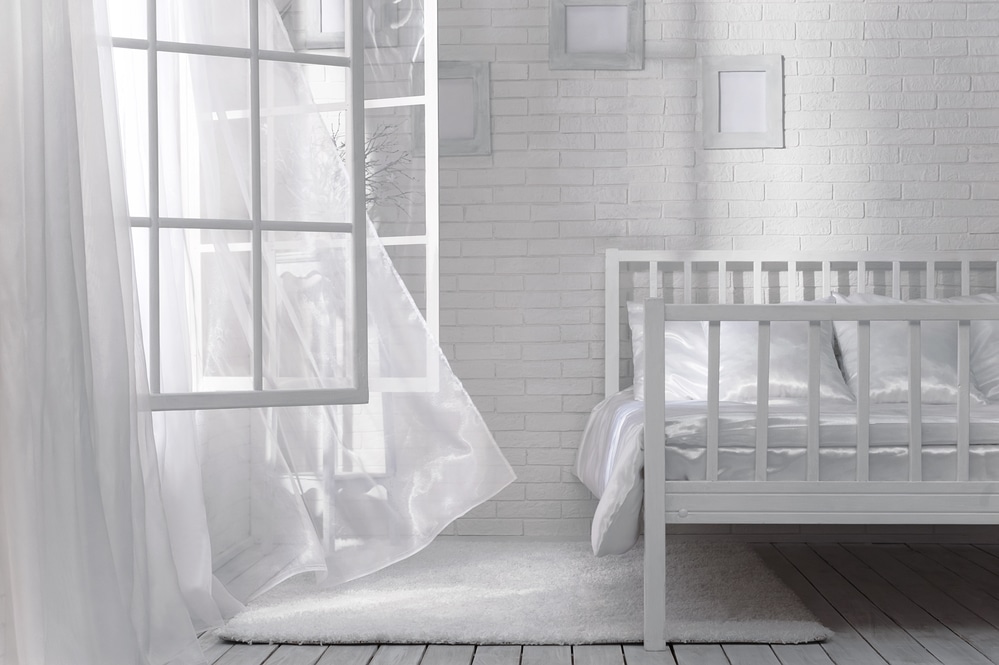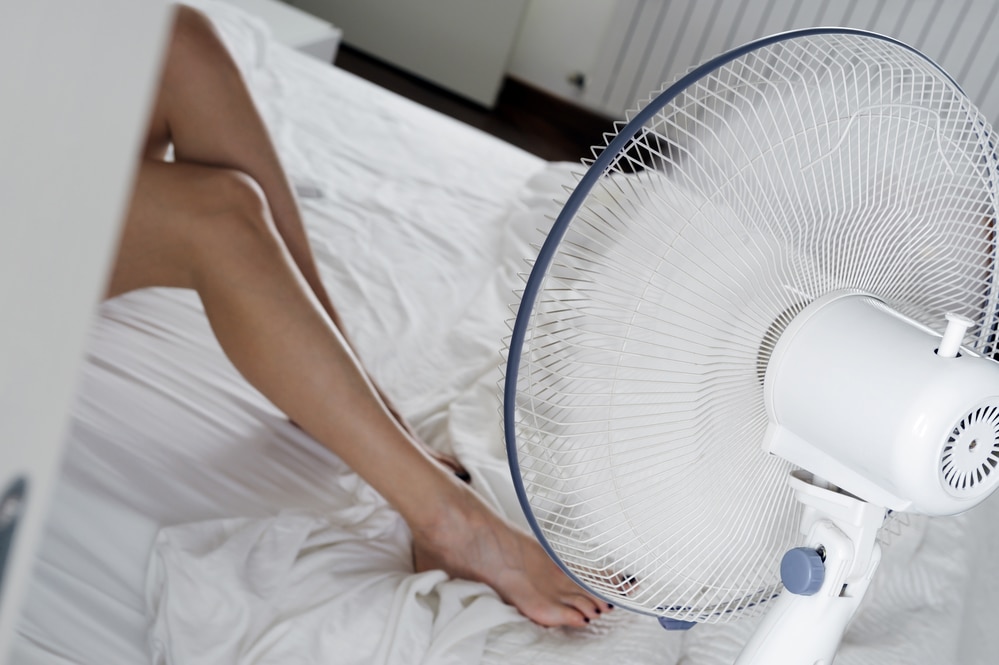Many people love the feeling of sinking into their bed and feeling hugged by conforming memory foam but hate overheating throughout the night. The most commonly reported complaint with it is that they can sleep too hot. So, is your memory foam mattress too hot?
Some people overheat to the point where they start sweating. This often leads to a chill and a never-ending cycle of being too hot and too cold. Fortunately, there are some easy ways to help prevent this from happening. Keep reading to find a solution that works for you.
Reasons Why People Find Their Memory Foam Mattress Too Hot to Sleep On
Are memory foam mattresses hot? Not independently. The problem lies in their heat retention after you add body heat. It builds up overnight and unless you change positions quickly it does not have enough time to release and return to its neutral temperature. Heat buildup worsens with couples.
The memory foam’s unique structure is what allows it to conform to your body and provide superior support and pressure point relief. However, the structure of the material also leads to its downfall, heat retention. It needs to be dense enough to support you, but the denser it is, the hotter it will become as you sleep. Memory foam is commonly used as an insulator in other industries and it would not be effective if it didn’t absorb energy, which includes heat.
Memory foam is porous by nature so it’s easy to suspect that it is a breathable material. Unfortunately, the small spaces inside the material are not interconnected so not much air moves around inside these mattresses. When you add the weight of your body and the memory foam compresses, the porous spaces also compress leading to even less airflow within and more heat retention.
Fortunately, many companies have gotten ahead if this issue and new cooling memory foam mattresses are being made. This new construction is a great solution and according to reviews, this does not compromise comfort.
If you are not currently searching for new kinds of mattresses, there are several things you can do to help decrease the temperature of your current mattress, so don’t think you have to get rid of it just yet.
How to Keep Cool on a Memory Foam Mattress: 4 Things You Should Try
Memory foam mattress sweating and overheating is common, but the good news is it doesn’t have to be. These tricks can decrease the temperature of hot mattresses down by as much as 20-30% overall. Let’s have a look at how to keep cool on a memory foam mattress:
1. Enable Maximum Airflow Underneath the Bed
Choosing a bed frame that promotes ample circulation can also help decrease the temperature of your mattress. As mentioned above, memory foam is rather dense and not the best with circulation. This makes the frame you put in on extra important.

A solid bed frame will prohibit any airflow through or underneath your mattress and should be avoided.
Instead. Choose a frame or platform that has evenly spaced metal or wooden slats. This will create more surface area exposed to natural airflow in your room and increase the breathability of the mattress overall. A platform bed is something you may consider.
Make sure the slats are not placed too far apart as this can cause unnecessary sagging and uneven wear. Memory foam needs the support of the bed frame to maintain durability and proper support, but a completely solid surface is too restrictive for the dense material.
It is okay to use the space under your bed for storage but try not to fill the space too tightly. If you do, it will defeat the purpose of the slatted bed frame by continuing to prevent air circulation underneath the bed.
2. Use Breathable Sheets on Your Mattress
Using breathable sheets on your mattress can make all the difference. Avoid sheets made from synthetic materials because they only add to the heat retention created by memory foam.
Sheets made from high-quality cotton are surprisingly effective at cooling your sleep surface down. Sheets made from natural bamboo fibers also provide a cooling sensation.
The thread count is not as important as the material the sheets are made from but usually, a thread count of 250-400 is optimal for sleeping cool.
The right sheets for your mattress are relatively inexpensive and should be considered first when trying to figure out how to cool down a Tempurpedic mattress.
3. Purchase a Cooling Pad or Topper for Your Mattress
A mattress topper is like a thick sheet that provides extra padding while allowing proper airflow and circulation. Mattress toppers made specifically for memory foam are available that are constructed out of natural materials like wool and cotton. They are designed to be breathable and facilitate extra circulation throughout your entire mattress.
A wool cover may seem a bit counterintuitive but it actually works very well as a memory foam cover. Just like a pair of wool socks in the winter, they wick sweat away from your skin if, or when it starts to overheat.
Gel foam toppers are also available. They incorporate foam with gel infused throughout the material to help them create a cooling sensation against the skin. This new type of foam does not overheat or retain heat like standard memory foam.
Another benefit of using a cover is that many of them can easily be removed and machine washed. This helps to keep your mattress clean, even if you sweat. It also keeps your mattress in a near mint condition
On the high end of the topper spectrum are electronic cooling pads. They have precise temperature control that is accessed through physical dials and in some cases, an app on your phone or other smart devices. Electronic pads also allow you to warm a mattress if you desire.
4. Use a Pillow That Doesn’t Contribute to the Problem
Something often overlooked by people when considering how to decrease the temperature is their pillow. Your head releases a lot of the body’s heat and if you use a pillow that traps this in, it will keep you unnecessarily warm.
Pillows made out of feathers, natural or synthetic down, cotton, buckwheat, and bamboo are known to sleep the coolest. A gel one can also sleep cooler than most but be careful when choosing this option. They may still retain small amounts of sweat. You can read our reviews on the different types of pillows to learn more.
Additional Tips to Help You Sleep Cool
Aside from the three main tips listed above, there are a few other things you can try that will help you sleep.
1. Promote Airflow in Your Bedroom
An easy way to promote airflow in your bedroom is by opening a window. In colder months a fan can also do the trick. If outside noise is a problem, the fan option may be best year round. Some find the ambient noise to be soothing as well.

2. Choose Your Pajamas Carefully
When wearing pajamas to bed make sure they are made from natural, breathable materials such as cotton. Synthetic fabrics restrict airflow to your skin and will only add to heat retention while you sleep. Or, another option is to lose the pajamas entirely and sleep in the nude. Many find that this helps them regulate body temperature overnight while at the same time adding an additional level of comfort.
3. Make Cold Air with Fans and/or Ice Packs
A two-way fan that sucks hot air out and blows cool air in form outside can be especially helpful in hotter months of the year when a normal fan simply moves hot air around. Placing an ice pack or frozen plastic bag filled with water in front of a fan will also help create new cool air for circulation. Increase the size of the ice pack or frozen bag of water to improve longevity.
4. Keep Lamps and Electronics Off or Away from Your Bed
Lamps and even overhead lights produce heat which can contribute to you overheating at night. Memory foam absorbs this heat and retains it for a short period of time so it is best to turn them off about 20-30 minutes prior to going to bed. Laptops and other electronics also produce heat and you should follow the same guidelines when using them in, or around your bed.
5. Use a Cooling Cloth for Temporary Relief
Some people find that placing a cold damp cloth on their chest or head when they lay down helps them to fall asleep faster. Taking a cold bath or shower before bedtime will also help you start your night of sleep off on the right foot.
6. Drink a Glass of Water Before Bed
Just like a shower or bath, drinking a glass of cold water will help you cool off before getting into bed. This will help ensure you are not adding any warmth from your body from the start. Don’t overdo it though or you may find yourself waking up in the middle of the night in need of the bathroom.

In Conclusion
Don’t give up on your memory foam right away! Many people find their memory foam mattress too hot to sleep on comfortably. If you bought one only to learn that it sleeps too hot for you, there are a few things you should try before replacing it. Consider buying a mattress pad or topper, use sheets made from natural materials, use a pillow that does not retain heat, and purchase a pad or topper that promotes cooling airflow while you rest. Once you figure out how to regulate the temperature properly you will learn to love it and the conforming, pressure point relief benefits it possesses.
Additional Resources
- Best Mattress for Stomach Sleepers
- Foam vs Spring Mattress
- Different Types Of Mattresses Explained
- Puffy vs Purple






